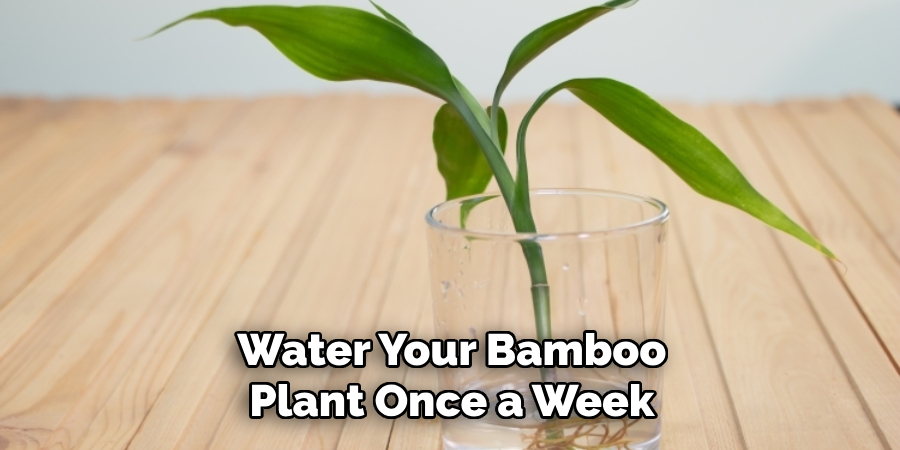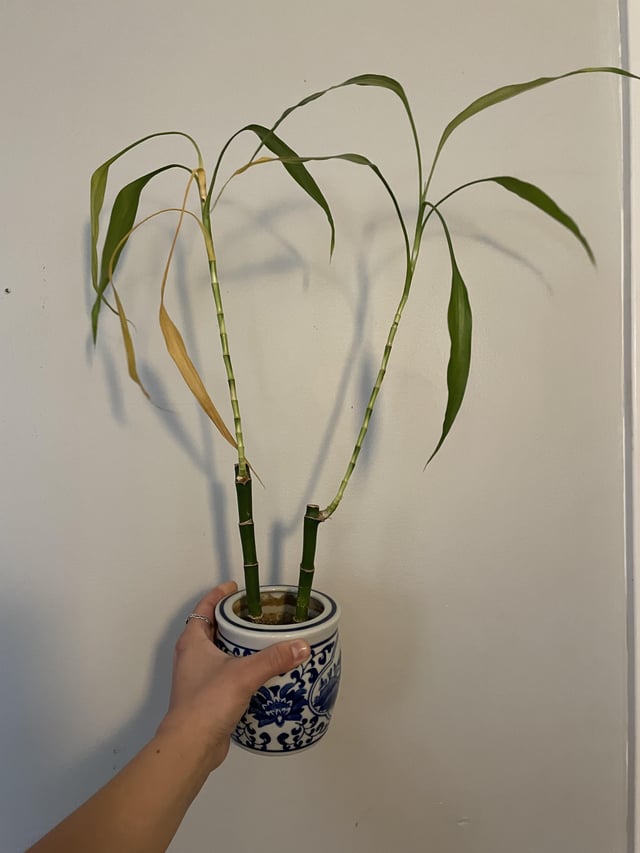To bring bamboo back to life, ensure it receives adequate sunlight, water it regularly, and provide proper drainage. Bamboo requires sunlight for photosynthesis and regular watering to keep its soil moist, but not waterlogged.
Additionally, make sure the bamboo has well-draining soil to prevent root rot. Consider using organic fertilizer to promote new growth and ensure the plant is in a location with sufficient temperature and humidity. With proper care, you can revive and rejuvenate your bamboo plants.

Credit: m.youtube.com
How to Bring Bamboo Back to Life: Step by Step Guide
**Understanding The Signs Of Unhealthy Bamboo**
Bamboo can sometimes exhibit signs of poor health, such as yellowing or browning leaves. These discolored leaves indicate a lack of nutrients or sunlight, and it’s essential to address this issue promptly. Additionally, wilting or drooping stems are clear indications of water stress or inadequate irrigation.
To revive bamboo, provide it with sufficient water and ensure the soil drainage is adequate. Stunted growth is another sign of unhealthy bamboo, caused by poor soil conditions or lack of nutrients. Regular fertilization and soil improvement can help address this problem.
Lastly, declining health, including thinning foliage or smaller leaves, might indicate disease or pest infestation. To prevent further damage, proper identification and treatment are necessary. By understanding these signs, you can take the necessary steps to bring your bamboo back to life.
**Identifying The Causes Of Bamboo Decline**
Bamboo decline can be caused by various factors such as watering issues. Overwatering can lead to root rot. Underwatering can cause dry and brittle bamboo. Poor soil conditions affect bamboo growth. Lack of nutrients can result in stunted bamboo growth.
Soil ph imbalance can hinder nutrient absorption. Pest and disease infestation can weaken bamboo. Common insects and pests, like aphids and mites, can damage bamboo. Common diseases, including fungal infections, can also harm bamboo. To bring bamboo back to life, it’s essential to address these causes and provide proper care and maintenance.
Regular watering, suitable soil conditions, nutrient-rich fertilizers, pest control measures, and disease prevention strategies can help revive bamboo and promote healthy growth.
**Taking Steps To Revive Bamboo**
Taking steps to revive bamboo involves evaluating its health, adjusting watering practices, improving soil conditions, and addressing pest and disease issues. By carefully assessing the overall condition of the bamboo, you can determine the best course of action. Start by examining the leaves, looking for discoloration, wilting, or signs of damage.
Next, consider the amount of water the bamboo is receiving and make any necessary adjustments to ensure proper hydration. Additionally, examine the soil quality and make improvements if needed, such as adding organic matter or adjusting ph levels. Finally, address any pest or disease issues that may be affecting the bamboo, using safe and effective methods.
Restoring the health of bamboo requires a proactive approach and regular monitoring to promote growth and vitality.
**Caring For Bamboo To Ensure Long-Term Health**
Bamboo can be revived by following proper care techniques. Watering is crucial, but avoid over-watering. Ensure the right frequency to maintain ideal moisture levels. Adequate drainage is essential to prevent root rot. Maintain soil conditions with regular testing and adjustments.
Apply fertilizer to provide essential nutrients for growth. Keep pests and diseases at bay through regular inspection and monitoring. If infestations occur, use natural control methods for a healthier bamboo. Remember to vary your sentence structure and use different phrases to engage the reader’s interest.
Frequently Asked Questions For How To Bring Bamboo Back To Life
How Often Should I Water My Bamboo Plant?
Water your bamboo plant once a week, ensuring the soil is moist but not soggy. Monitor the moisture level in the soil to prevent overwatering, which can lead to root rot. Adjust the watering frequency based on the plant’s specific needs and environmental conditions.

What Type Of Sunlight Does Bamboo Need?
Bamboo plants thrive in bright, indirect sunlight. They do best when exposed to 4-6 hours of sunlight each day. Avoid placing them in direct sunlight for extended periods, as this can scorch the leaves. Consider providing shade during the hottest parts of the day, especially in hot climates.
How Do I Revive A Dying Bamboo Plant?
To revive a dying bamboo plant, trim any yellow or brown leaves and roots that appear rotten or damaged. Repot the plant using well-draining soil, and ensure the pot has proper drainage. Place the plant in a location with appropriate lighting and monitor its water and nutrient needs closely.
With proper care, the bamboo should recover over time.
Conclusion
Reviving bamboo plants requires a combination of proper care, regular maintenance, and attention to its unique needs. By following the tips and techniques outlined in this blog post, you can bring your bamboo back to life and enjoy its beauty and benefits once again.
Remember to assess the condition of your bamboo, provide adequate water and sunlight, prune and fertilize regularly, and address any pest or disease issues promptly. With patience and diligence, your bamboo will thrive and bring life and vibrancy to your space.
So don’t give up on your bamboo just yet – give it the love and care it deserves, and watch it flourish!

